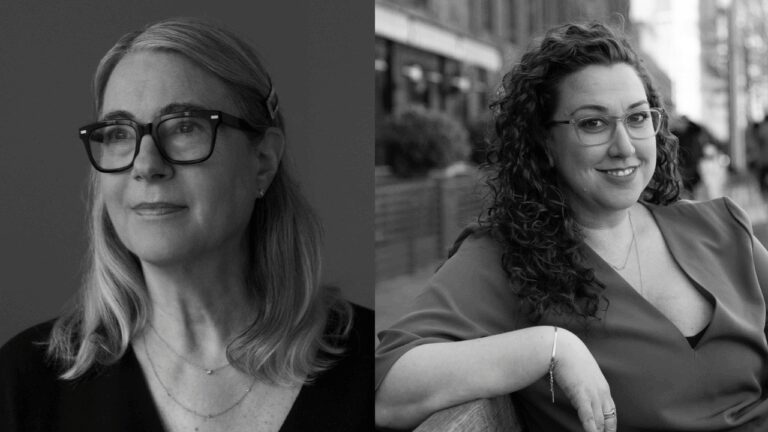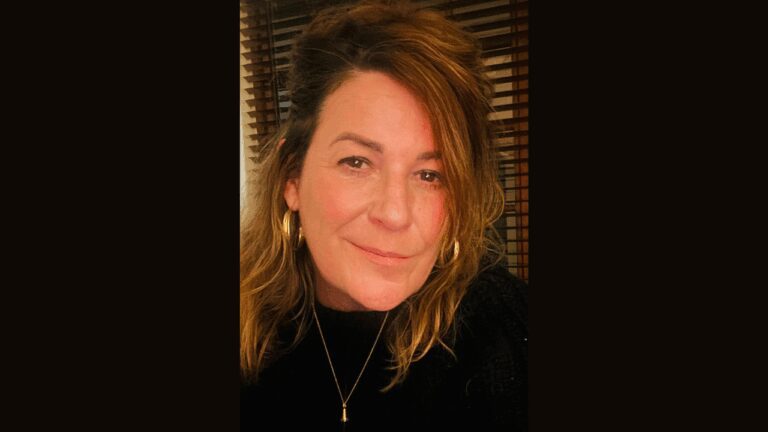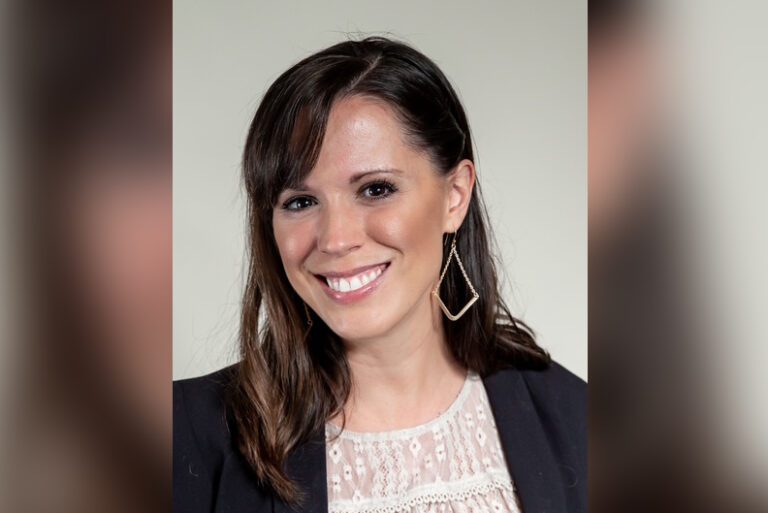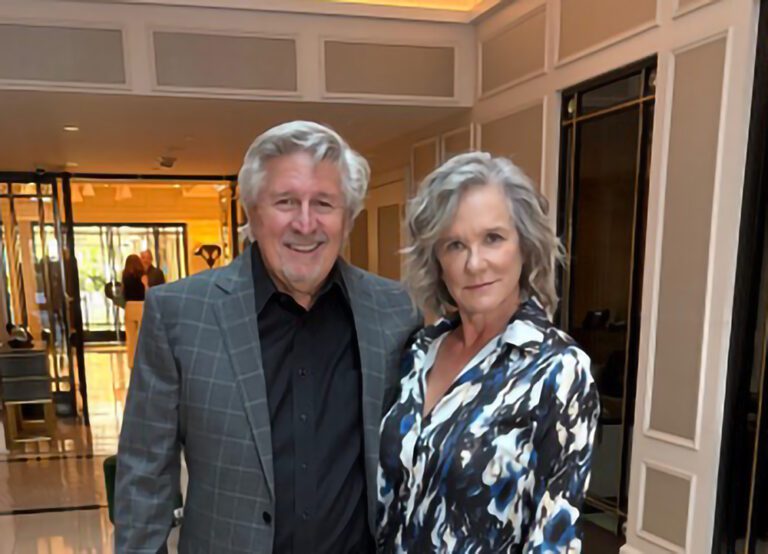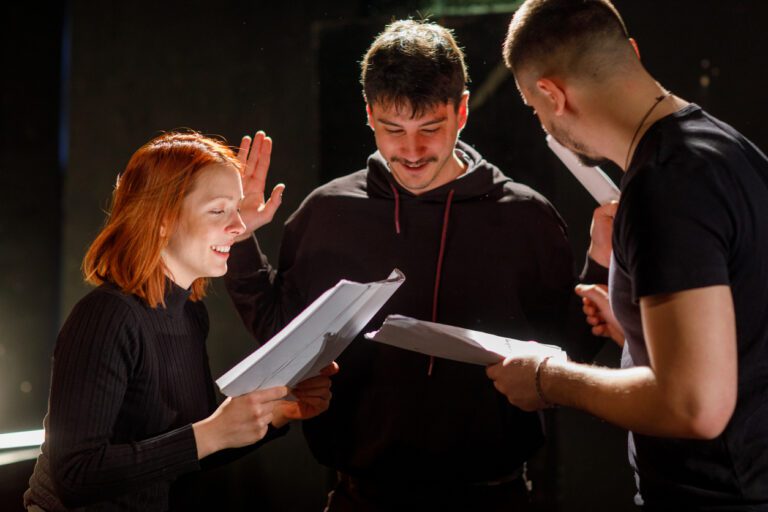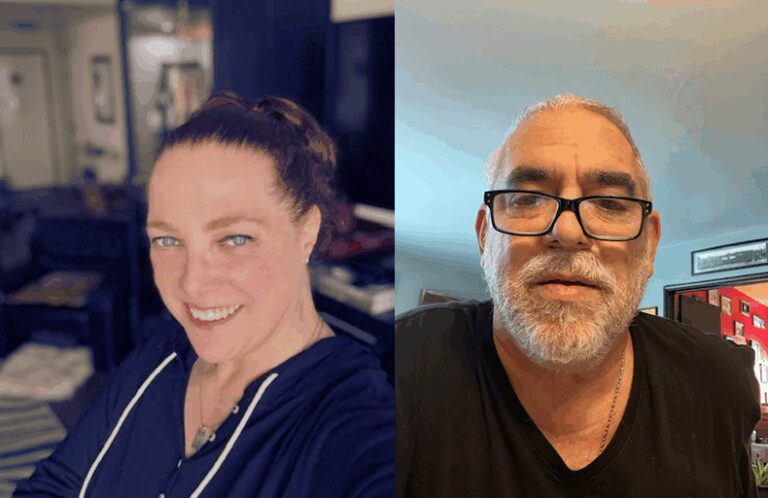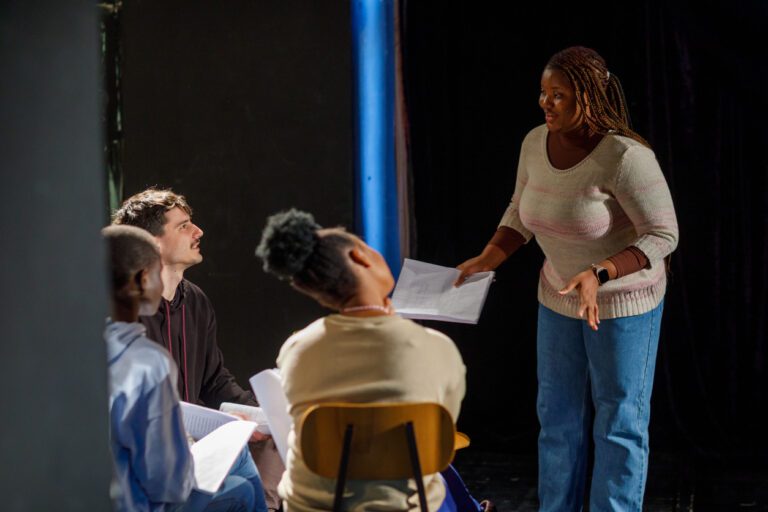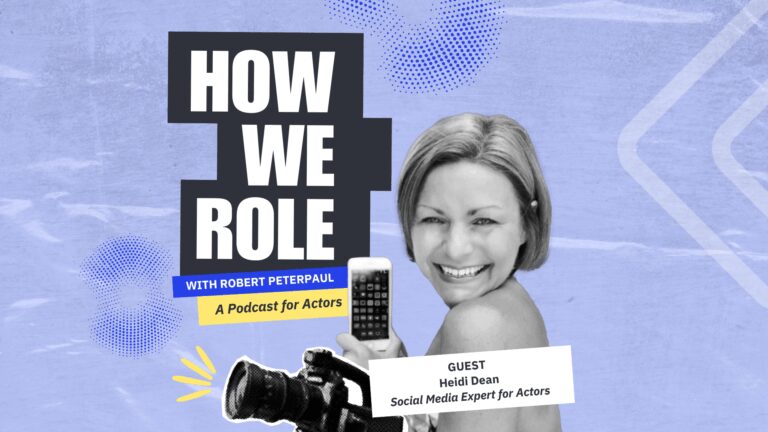Kiss of the Spider Woman, directed by Bill Condon, is a musical drama starring Jennifer Lopez, Diego Luna, and Tonatiuh in a breakout role. The film is about Valentín (Luna), a political prisoner, who shares a cell with Molina (Tonatiuh), a man convicted of public indecency. An unlikely bond forms as Molina recounts a Hollywood musical plot starring Ingrid Luna (Lopez).
Casting directors Bernard Telsey, Adam Caldwell and Tiffany Little Canfield were tasked with casting this ambitious project. Telsey and Caldwell spoke with Casting Networks about the casting process and how rising star Tonatiuh landed the coveted role of Molina.
Insights From Bernie Telsey and Adam Caldwell
- Use the audition process to explore and show your full range instead of worrying about rejection, as casting teams want to see your authentic artistic expression.
- Be prepared to take notes and adjust quickly during auditions to demonstrate you can collaborate well with directors, music, and choreography teams.
- Showcase all relevant skills because casting often assesses these simultaneously, so stay versatile and ready for different audition demands.
What was Bill Condon’s vision for casting this film?
Bernard Telsey: Bill really wanted to tell this story in a modern way, even though it takes place in the 1980s. We wanted to cast it authentically, with actors of Latin descent, Spanish, etc. Bill sent the script to Jennifer Lopez, and she loved it — specifically his screenplay, because he adapted it differently from both the Broadway musical and the original film.
She was not only a perfect choice for that role, but in today’s world of independent filmmaking, you need names to help move a project forward. She helped get the movie greenlit. So she came on board first, and Diego followed.
How did Diego become involved?
Telsey: Diego was definitely on Bill’s list. Having no idea if Diego would be available or interested, we expanded the list as much as possible and did that homework. But this was another situation where Diego read the script and said, “Yes.”
The main trio is rounded out by Tonatiuh as Molina, in what’s essentially a star-making role for a young actor. What qualities were you looking for in that character, and how did Tonatiuh fit the bill?
Telsey: I don’t think we had any idea who would be playing Molina. Again, we wanted it to be someone of Latin descent. We wanted it to be someone who was gender non-conforming.
We knew Tonatiuh from his previous auditions. He sent in a self tape and he really stood out for Adam, Tiffany and myself. We sent it along to Bill, who said, “Yes, yes, yes, let’s keep him on the list, let’s keep pursuing him, but let’s do more, let’s keep looking.” That’s the nature of casting. You’re not gonna stop searching. But Tona stood out.
Caldwell: The search was international. The majority of it was from Zoom auditions and self tapes at the start. We had help from [regional casting], who were covering Central and South America, and even looking in Spain. We had someone local in Buenos Aires doing a deep dive. We had a wonderful casting associate named Candido Cornejo, who is a trans casting professional who speaks Spanish, so she was able to really search in other markets that were Spanish-speaking.
What material did you have the actors read for the audition?
Caldwell: It was the one of Molina and Valentin’s early scenes together, where Molina has to make an entrance and be their flamboyant self, show the humor, and the essence of who this character is when walking into this prison cell and taking up this all amount of room and oxygen that you see in the movie.
We also included a more internal, quiet, scene that leads into the song, “She’s a Woman,” Molina’s big solo moment in the movie. So, we had the humor-comedy entrance, and the vulnerability of the line, “I’m a woman, why don’t you believe me?”
Do you give adjustments to the actors during this process?
Caldwell: There are always adjustments, that’s part of our process, not only from a performance level, but we need to see how an actor responds to making an adjustment. Later, when we speak to Bill, the music director, or the choreographer, they need to know if the actor can take notes, make changes, and work together with others.
Since this role requires someone who can act, sing and dance, does that mean three separate auditions?
Telsey: It’s sort of all happening at the same time because people were auditioning from all over. The minute we liked someone, they were getting more scenes from us, and then being brought in to in-person auditions.
Tona was in LA, and Bill was traveling back and forth between LA and New York, so we had Tona come in and work with him. When that session went well, then it was like, “Okay, now let’s go in the other room and do the singing auditions with the musical department.” Then it was, “Let’s call Sergio (Trujillo, the choreographer), and see if we can dance Tona tomorrow.”
Bernie, you co-own a theater space in New York. That must have come in handy.
Caldwell: Part of our process of getting Tona in a room with Bill was creating a sort of “play area” in Bernie’s theater. We had cots and mattresses (to recreate the jail cell), and the costume department had a bunch of silk robes and skirts that Tona was able to have at his disposal.
What was the “aha” moment when you realized Tona was the one?
Telsey: It was the day that we had him dance with Sergio. We’ve seen people who look like they can dance, who say they can dance, and then have two left feet. So for me, it was the moment Tona was dancing, and it was working. I know Sergio well enough that I could see he was liking him. That was the moment for me that was like “Oh, Adam, we got it. Tiffany, we got it!”
Adam, what about you? When did it click for you?
Caldwell: I don’t know that there was one specific moment, because it felt more like a natural progression. From Tona’s very first self tape, I was struck by the way he found grace, beauty and movement, and posing in a way that really fit Molina. He captured a beautiful femininity in an exciting way.
What made his performance continue to stand out as the process went on?
Caldwell: With Tona, there was never a moment where we thought this may not work. At every point that we explored further and took more time, there was an additional layer of excitement that this was still working, from the in-person stuff to the dancing to the chemistry reads.
We were getting reports that it was going well in conversations between Tona and Bill. Tona would go to see (costume designer) Colleen Atwood in preparation for the in-person session, and Colleen would send us some quick photos of Tona trying on some of the costumes, and playing around with different poses and light that looked so beautiful.
Telsey: He just kept opening himself up more and more as it got further along. The pressure was on. A person could either fall down under that pressure, or, in Tona’s case, he just kept opening up.
I try to tell actors all the time: use the audition process to explore, to deepen, to show, rather than worrying about whether you’re going to get rejected. Tona never let that word even live in his aura. Because if rejection happened, so be it. He used the process as a chance to act, to dance, to show.
So, for actors, should they not think about rejection during auditions?
Telsey: Everybody in the room wants it to work, even if you think otherwise. Don’t focus on being rejected or not being liked. Show everybody what you have, because what you have is what we want.
Caldwell: What we want is to see your version of the character. If you’re second-guessing or trying to please us, that’s not going to serve you. It’s about being the artist that you are, and presenting to us, based on the information that you have in this moment, how you think this goes.
Even if you’re off base?
Caldwell: Even if it’s not right. Because it’s who you are, and we can help you with some more information to get you closer to what the team is looking for. We can give you a bit more guidance, but it’s coming from a place of collaboration, and not just someone telling you how to do it.
Final Takeaways
Auditioning for a major role is a challenging but invaluable opportunity to grow as an actor. The casting process for Kiss of the Spider Woman shows how embracing your unique qualities and staying open to collaboration can set you apart. Here are some key takeaways for new actors navigating auditions:
- Use the audition to explore your character deeply instead of fearing rejection.
- Show your authentic self and don’t try to second-guess what the casting team wants.
- Be ready to take notes and adjust your performance quickly during auditions.
- Prepare to demonstrate all required skills, such as acting, singing and dancing, often in one process.
- Treat every step as a chance to build chemistry and connection with the creative team.
You may also like:

